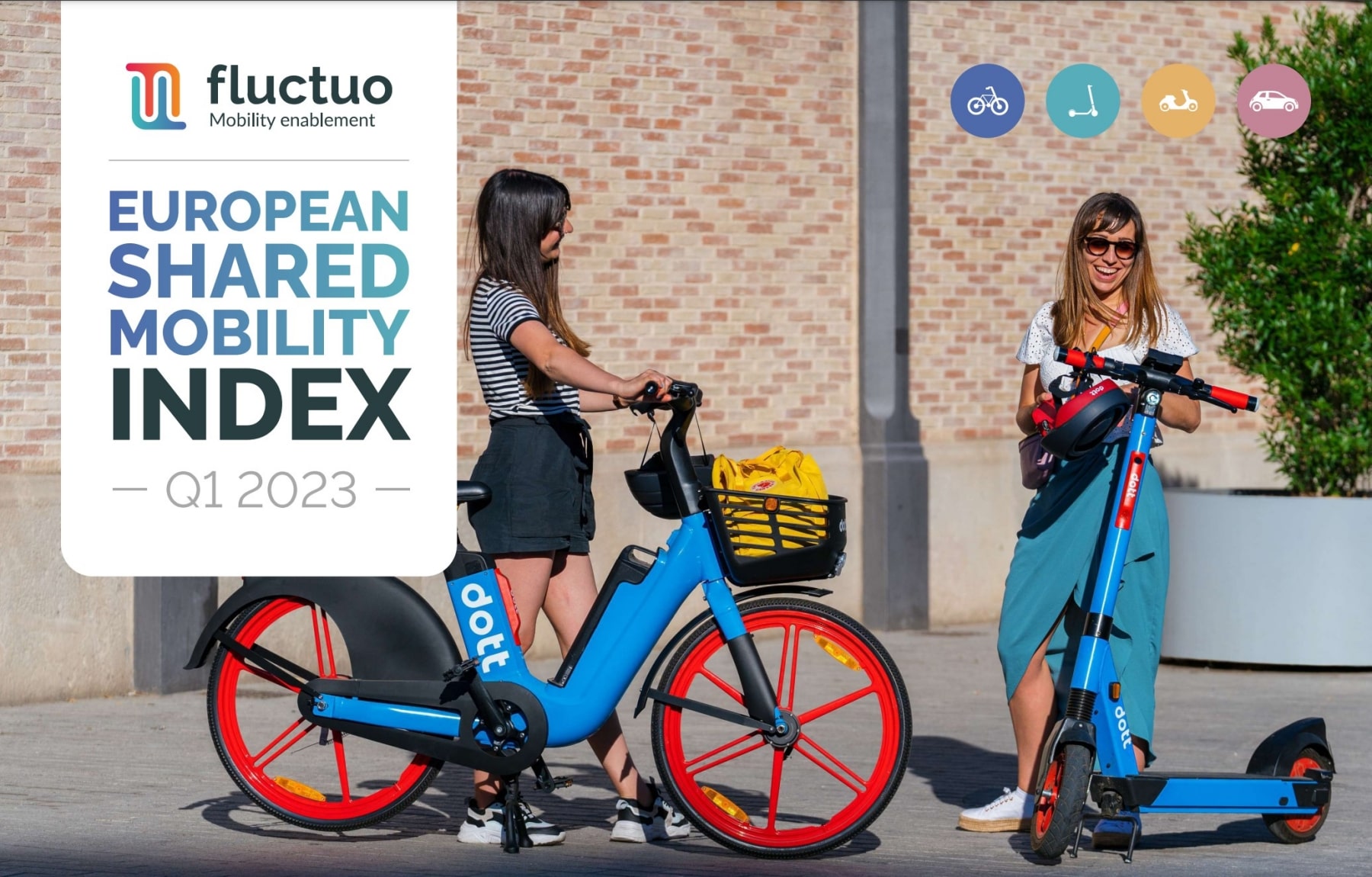
Fluctuo publishes Q1 2023 European Shared Mobility Index
391 days ago
3 minutes
Source: Fluctuo European Shared Mobility Index Q1 (2023)
The first quarter of 2023 has been a challenging one, and cities and shared mobility operators are changing tack on transport innovation. Some cities are limiting the number of vehicles that can be present at one time, with Paris even banning shared scooters in April. Operators are finding little profit in the shared transport city solutions, but there is a lot more to discover and rider numbers are still increasing.
Fluctuo predicts that some cities have reached full capacity for electric scooters, whereas others, particularly Eastern Europe, haven’t. Shared bikes are expected to catch shared scooters in terms of user numbers, while improved efficiency will see more people using the systems.
It is commonly accepted that urban density plays a huge part in public transport logistics in our cities. In the most densely populated areas, there is a shift away from private car usage, instead encouraging other modes of transport and more simplified means of getting around, particularly when the focus on the city is in one place, for example workplace communities. Here, amenities are close by, so use of walking, cycling and public transport is encouraged. This benefits our health and reduces our carbon footprint.
Shared mobility – namely bikes, scooters and mopeds – is also urged, and Fluctuo has collected data from over 90 European countries that shows cities with a population of 5000 km2 have over 10,000 shared vehicles. At 8,600 vehicles, Copenhagen is the only exception. Some of these cities are, of course, Europe’s largest, so this may not come as a total surprise. Outside of this 90-city quota, an additional 6 cities with a dense urban population were found to have fewer than 10,000 vehicles. Fluctuo suggests that these cities may not yet be at full capacity and hence, these figures may well change going forwards. Access to shared vehicles is a key factor in improving the environmental impact of our cities.
An accurate way of quantifying the success of shared vehicles is by looking at the trips per vehicle per day (TVD). Popularity is gathered by the amount of shared vehicles but the TVD tells the real success story. Fluctuo’s investigation found that high population density increased shared vehicle use. This is optimistic and reflects the EU’s overall quest to make city residents healthy and reduce the detriment to the environment.
Julien Chamussy, CEO at Fluctuo commented,
“After 5 years of hyper-growth made possible by massive VC-backed investments, shared mobility operators now have months to become profitable.” further adding, “It may seem counterintuitive, but the growing number of calls for tenders and the increased demands of European cities (parking, user safety, environmental impact) could actually help operators. With fewer competitors and smaller fleets, performance metrics on the vehicle level should greatly improve.”

LEVA EU
Campaign success
Lorem ipsum dolor sit amet, consectetur adipisicing elit, sed do eiusmod tempor incididunt ut labore et dolore magna aliqua.
Member profile
Lorem ipsum dolor sit amet, consectetur adipisicing elit, sed do eiusmod tempor incididunt ut labore et dolore magna aliqua.
